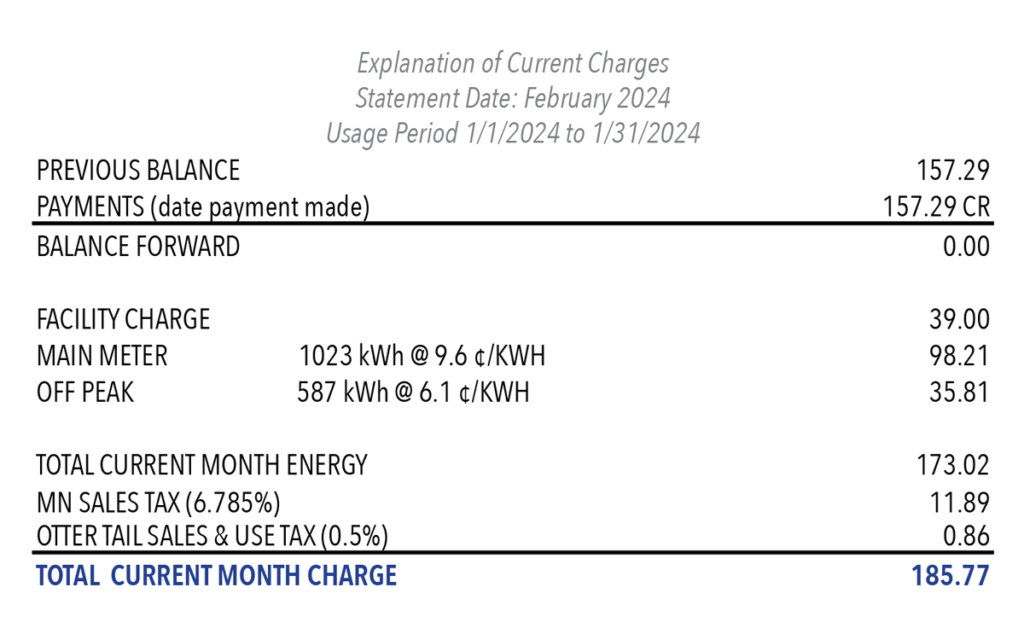Learn more about the different components of your energy bill and Lake Region Electric Cooperative’s rate structure. If you’re interested in tracking your usage patterns, register for SmartHub today!

Facility Charge – There are a number of fixed costs that are necessary to deliver power to a service; including poles, wires, transformers, meters, trucks, and maintenance costs. These are costs incurred by LREC whether or not energy is being used at a service or not. The purpose of a facility charge is to ensure these costs are properly being recovered. While LREC has substantially lowered controllable expenses, the co-op continues to invest in the distribution system to improve electric service reliability.
Metered kWh Charges – Primarily recovers the cost of electricity from our wholesale power provider, Great River Energy, as well as administrative costs necessary to provide electric service.
What is a PCA?
Members may notice that that Power Cost Adjustment (PCA) on their bill statements fluctuates certain months. While a portion of the co-op’s cost of power is included in our energy rates, the PCA reflects an adjustment for the actual cost of wholesale power (which is LREC’s largest expense) during each billing period.
Using a PCA allows for monthly changes as wholesale energy costs fluctuate, without having to continually restructure rates. Some months may see a higher rate due to extreme heat or cold causing additional demand resulting in increased power costs. This fluctuation is largely due to the changes in energy costs from the MISO market when power is purchased wholesale from Great River Energy. PCAs are a month behind, so the rate will appear on the bill following the relevant month.
Members can calculate their own PCA each month by multiplying the PCA amount (listed on the electric bill) by the kilowatt hours (kWh) used during the billing period. This formula charges all LREC members equally for the increase or decrease in the cost of generating electricity, based on their usage that month.
